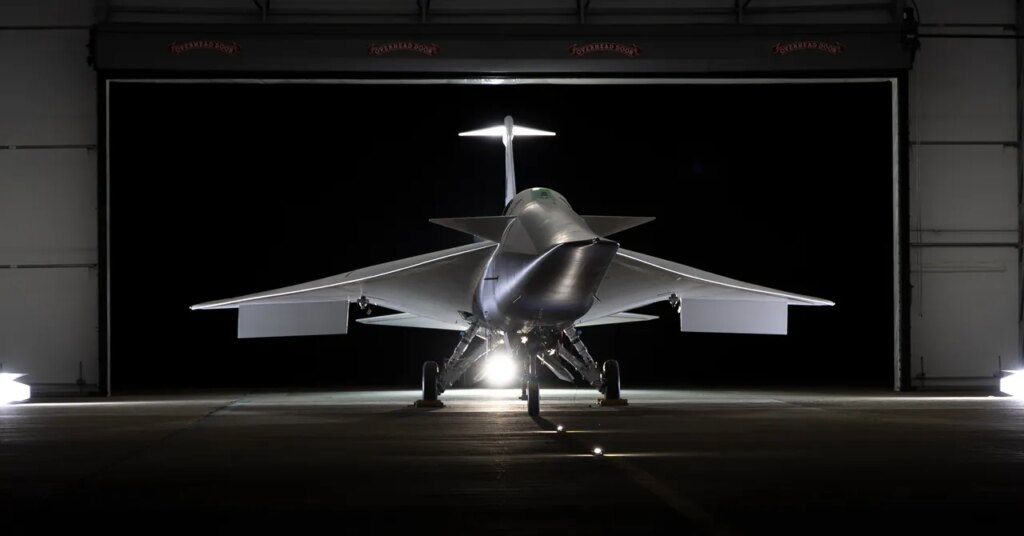The X-59 will generate a decrease “sonic thump” due to its distinctive design. It was given an extended, slender nostril that accounts for a few third of the entire size and breaks up strain waves that might in any other case merge on different components of the airplane. The engine was mounted on prime of the X-59’s fuselage, moderately than beneath as on a fighter jet, to maintain a clean underside that limits shock waves and in addition to direct sound waves up into the sky moderately than down towards the bottom. NASA goals to supply key knowledge to plane producers to allow them to construct much less noisy supersonic planes.
A Jet Like No Different
The X-59 is a single-seat, single-engine jet. It’s 99.7 toes lengthy and 29.5 toes huge, making it virtually twice so long as an F-16 fighter jet however with a barely smaller wingspan. The X-59’s cockpit and ejection seat come from the T-38 jet coach, its touchdown gear from an F-16, and its management stick from the F-117 stealth assault plane. Its engine, a modified Basic Electrical F414 from the F/A-18 fighter jet, will enable the aircraft to cruise at Mach 1.4, about 925 mph, at an altitude of 55,000 toes. That is practically twice as excessive and twice as quick as business airliners usually fly.
Maybe essentially the most hanging change on the X-59 is that it doesn’t have a glass cockpit window. As an alternative, the cockpit is totally enclosed to be as aerodynamic as doable, and the pilot watches a digicam feed of the surface world on a 4K monitor generally known as the eXternal Visibility System.
“You may’t see very clearly by means of glass if you have a look at it at a really shallow angle, and so it is advisable to have a sure steepness of the view display screen to have good optical qualities, and that might develop a powerful shock wave that might actually corrupt the low-boom traits of the airplane,” says Michael Buonanno, the air automobile lead for the X-59 at Lockheed Martin.
For this primary flight, the X-59 flew at a decrease altitude and at about 240 mph, in response to NASA. Throughout future exams, the jet will steadily enhance its pace and altitude till it goes supersonic, NASA mentioned, which happens at about 659 mph at 55,000 toes, or 761 mph at sea degree. The pace of sound varies in response to temperature and to a lesser diploma strain, inflicting it to lower at increased altitudes.
“The first goal on a primary flight is actually simply to land,” James Much less, a undertaking pilot for the X-59 who will likely be conducting future flights, tells WIRED. Much less flew an F-15 fighter jet in formation with the X-59 as a help plane through the flight, observing the brand new experimental jet for any points.
{content material}
Supply: {feed_title}

